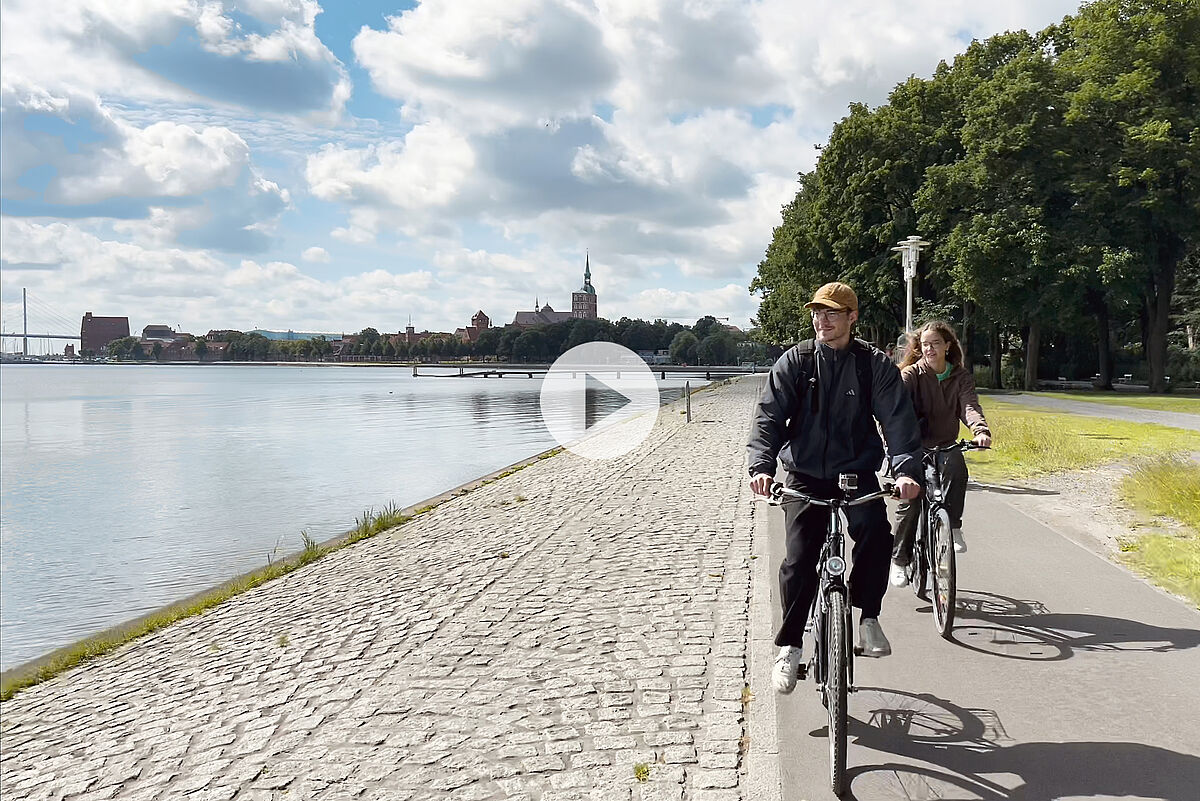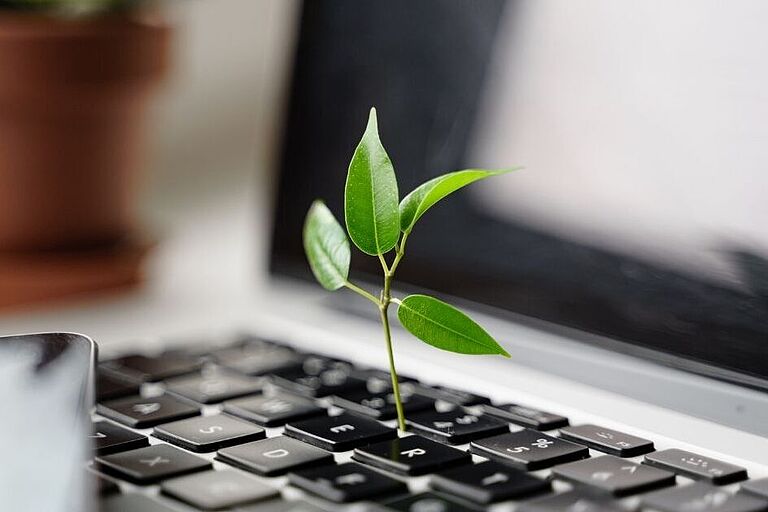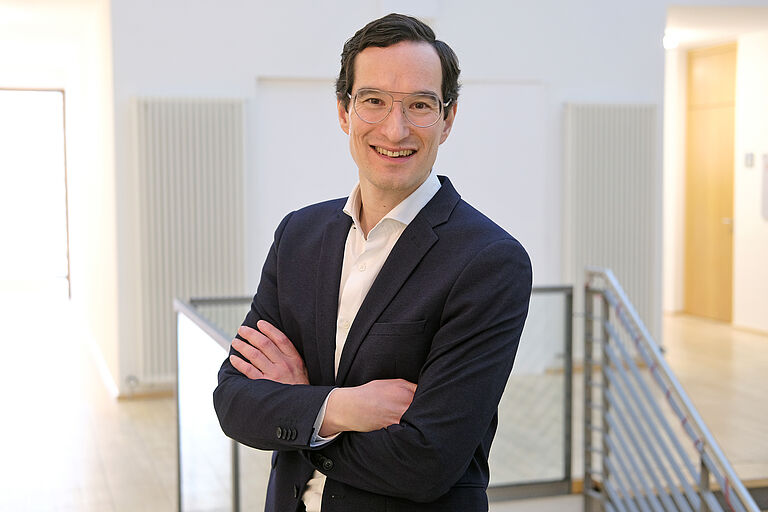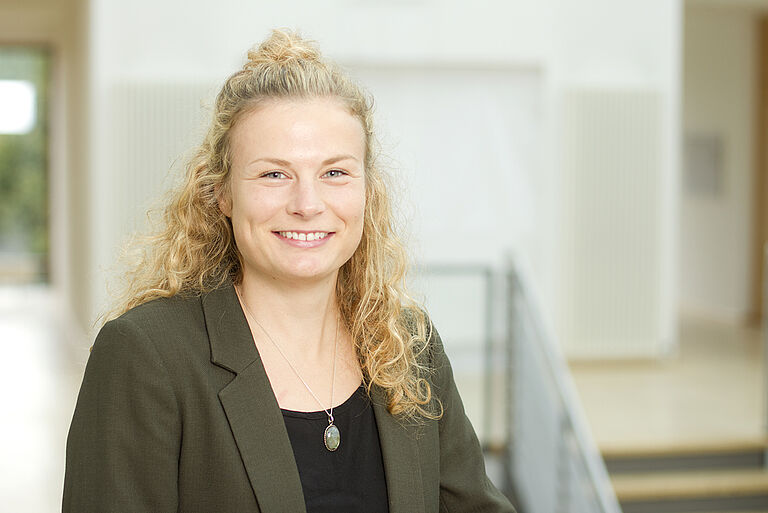First turn down the heating, then open the window, turn on as much light as necessary, not as much as possible - what many people find very easy at home sometimes doesn't work so well in the office. It's different processes, different habits, perhaps a little negligence, but rarely malice aforethought. Stralsund University's goal of becoming a climate-friendly university is primarily intended to encourage a change in thinking and thus more conscious and sustainable action. A huge topic: waste. A supposedly small issue with huge implications: the redesign of the sanitary facilities, which was planned, applied for, supported and implemented by Department I.
Effective mini-steps towards greater sustainability: redesigning the sanitary facilities
What are unproblematic work steps at home require a lot of effort and resources in larger buildings. If paper towel dispensers work poorly and only unusable scraps or whole piles of paper come out, such waste multiplied by 250 employees plus 1,800 students adds up. In order to make use of such levers, Department 1 has opted for sustainable partners for the refurbishment of the sanitary facilities, which was necessary anyway. For example, the newly installed dispensers use a “more effective”, i.e. longer-lasting, foam soap instead of using massive amounts of liquid soap. It seems trivial, but when you consider that there are 156 toilets on the entire campus and well over 4,000 hands want to be washed there, the balance sheet suddenly becomes interesting. So many sanitary facilities also mean a lot of work. Previously, the cleaning staff needed 65 keys to refill the various dispenser systems, which is not only unnecessary, but also inconvenient in terms of the amount of work involved. Having just one key now also saves a little on personnel resources. All sanitary facilities have been converted since October 2024.
Waste topic
Less glamorous, but an essential factor for sustainability, is waste.
In May 2024, the Sustainable Campus Working Group and Rectorate Commission conducted an online survey. The framework was provided by the “Future Forum Climate-Friendly Universities” project. The staff and students surveyed most frequently named waste separation as one of the key measures to make the university more sustainable. Problem: “The results clearly show that two thirds of students and staff are not yet able to separate waste across the university,” explains Wencke Wendlandt, who set up and drives the working group. Theoretically, there are separation options - most kitchens have separate waste garbage cans, albeit with a sometimes confusing color system. Department I has taken up the cause, in close consultation with Chancellor Fabian Berger: “The great thing is that the vast majority of staff, students and we want the same thing - to separate waste responsibly and easily. There was a lack of the latter, but that will change.”
New separation system
By the fall at the latest, two waste separation options are to be set up in the corridors of most buildings on campus. The bins will have the familiar color scheme - black for residual waste, yellow for plastic and lightweight packaging, brown for organic waste. Paper waste (and only paper waste) is to be disposed of in the offices or, in the case of larger quantities, simply at the waste collection points, as are already available in the inner courtyards of buildings 4, 19 and 21, for example. Anyone who misuses their paper garbage can due to a lack of trust in the company's waste separation policy, which is contractually stipulated, or for reasons of convenience, will have to live with the consequences. The paper waste in the offices is now only emptied once a week. You can imagine that the half-life of a banana peel's odor neutrality is not so good ...
Facts, figures, nice to know
- Large waste collection bins (including one for glass) are already in place at House 4 and the sports hall in the inner courtyard, House 6, House 19, House 20 and House 21, where the cleaning company also empties residual waste, paper and plastic waste. If there is too much waste in individual garbage cans, it is our janitors who redistribute the waste.
- Why is there too much garbage, even in the current situation? - Because garbage is sometimes disposed of illegally on the university campus. Anyone who sees something like this is happy to point out that this is not a public disposal site. Unfortunately, bulky waste that doesn't come from HOST also ends up behind House 18.
- Shredding? - Consumes a lot of energy with conventional small office equipment. Better: Data garbage cans can be requested from the secretariats of the faculties or from Department I, Claudia Heller.
- Sanitary facilities in figures: 156 WC cubicles, 134 soap dispensers, 122 paper towel dispensers, 156 toilet paper dispensers, 62 wastepaper baskets in washrooms
More support
“The introduction of university-wide waste separation and appropriate disposal is a major and visible lever for greater climate protection and sustainability at our university,” says Wencke Wendlandt. She tackles issues like this almost tirelessly. What she and her team need is support. In the form of
- Participation in the AG meetings,
- helping to organize a work assignment to green the campus,
- by taking on small projects of their own (reviving swap carts, looking after their own flowering areas, raised beds)
- Offering further training in environmental education/sustainability with appropriate expertise - in-house if possible
- Contributing to a possible open lecture series on climate protection and sustainability
- And of course always through cooperation, for example for sensible waste separation, which will take us as HOST further towards a climate-friendly university
- as well as responsible use of energy see in the news Will we (soon) be a climate-friendly university? - Stralsund University of Applied Sciences








